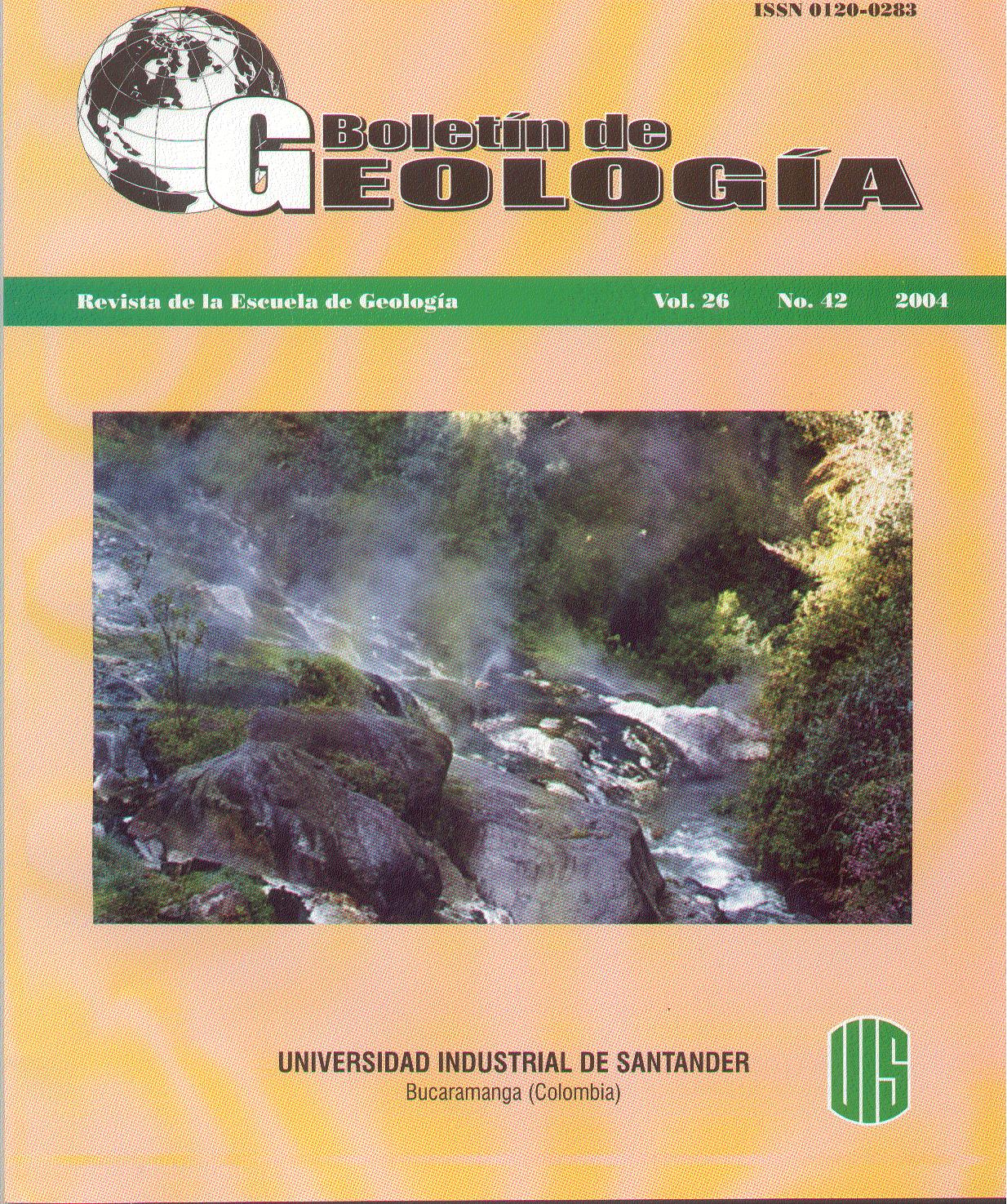Published 2004-03-25
Keywords
- Radon,
- radioactivity,
- geohazards,
- lung cancer
How to Cite
Abstract
Natural hazards such as hydrological, seismological, volcanological and landslides are included in the Colombian territorial planning. An increasing understanding of the elevated impact in the public health that plays radioactive hazard caused by radon, has allowed in european countries and in the United States of America to introduce important legal issues focussed on the reduction of the associated natural radioactive risk.
Radon is a gas responsible of 65% of all radioactive hazard in our planet. This gas is accumulated in the indoor´s air, in silet form and is the second cause of lung cancer deaths, after the tobacco consumption.
In this work some commentaries are made on the study state of radon gas in Colombia, as well as some experiences in european countries and in the United States of America.
Downloads
References
Doi, M., Fujimoto, K., Kobayashi, S., and Yonehara, H. (1994). Spatial distribution of thoron and radon concentrations in the indoor air of a traditional japanese wodden house. Health Physics, Vol. 66, N.1, pp. 43-49.
Environmental Protection Agency - EPA (2002). Zone map of radon. http://www.epa.gov/iaq/radon/index.html
Flood, R.L., Thomas, T.B., Suneson, N.H., and Luza, K.V., (1990). Radon potential map of Oklahoma. Oklahoma Geological Survey Map GM-32, scale 1:750.000. USA.
Garzón, G., (1996). Mediciones del Rn222 y CO2 en el suelo del volcán Galeras (Colombia) y ocurrencia de sismos locales. II Seminario Latinoamericano “Volcanes, Sismos y Prevención”. Lima y Arequipa, Perú, pp. 115-118.
González, L. y Garzón, G., (2001). Estudios isotópicos en la falla Villamaría-Termales, departamento de Caldas, Colombia. Revista Horizontes Naturales, Facultad de Ciencias Exactas y Naturales, Universidad de Caldas, Manizales, Vol. 4, pp. 17-30.
Gundersen, L.C.S., Schumann, R.R., Otton, J.K., Dubiel, R.F., Owen, D.E., and Dickinson, K.A., (1992). Geology of radon in the United States. In: Gates, A.E. and Gundersen, L.C.S. (editors), Geology control on radon. The Geological Society of America, Special Paper, Vol. 271, pp. 1-16.
Hiwely, W., (2003). Es beneficiosa para usted la radiación?. En: Revista Discover en español, Ideas Publishing Group, Miami, Florida, USA, 56-62.
Keller, G., (1992). Mitigation in high radon areas in Germany. Radiation Protection Dosimetry, Vol. 45, pp. 565-568.
Morán, C., Chica, A., y Garzón, G., (2001). Estudio de gases en seis fallas geológicas del departamento de Nariño, Colombia. Revista Horizontes Naturales, Facultad de Ciencias Exactas y Naturales, Universidad de Caldas, Manizales, Vol. 4, pp. 53-62.
Salazar, S. P., Carvajal, C.A., and Garzón, G. (2003). Radiological geohazard survey in the southeast of Manizales city, Colombia. 7th International Conference on Gas Geochemistry, Freiberg, Germany, 3-5. http://www.copernicus.org/ICGG7
Salazar, S. P., (2002). Mapa geoquímico del gas radón para el suroriente del municipio de Manizales. Tesis de pregrado: Programa de Geología y Minas, Facultad de Ciencias Exactas y Naturales, Universidad de Caldas, Manizales, 104pp.
Segovia, N., Pena, P., and Tamez, E., (1991). Radon survey in Mexico city. Nuclear Tracks and Radiation Measurement, Vol. 19, N.1, pp. 405-408.
